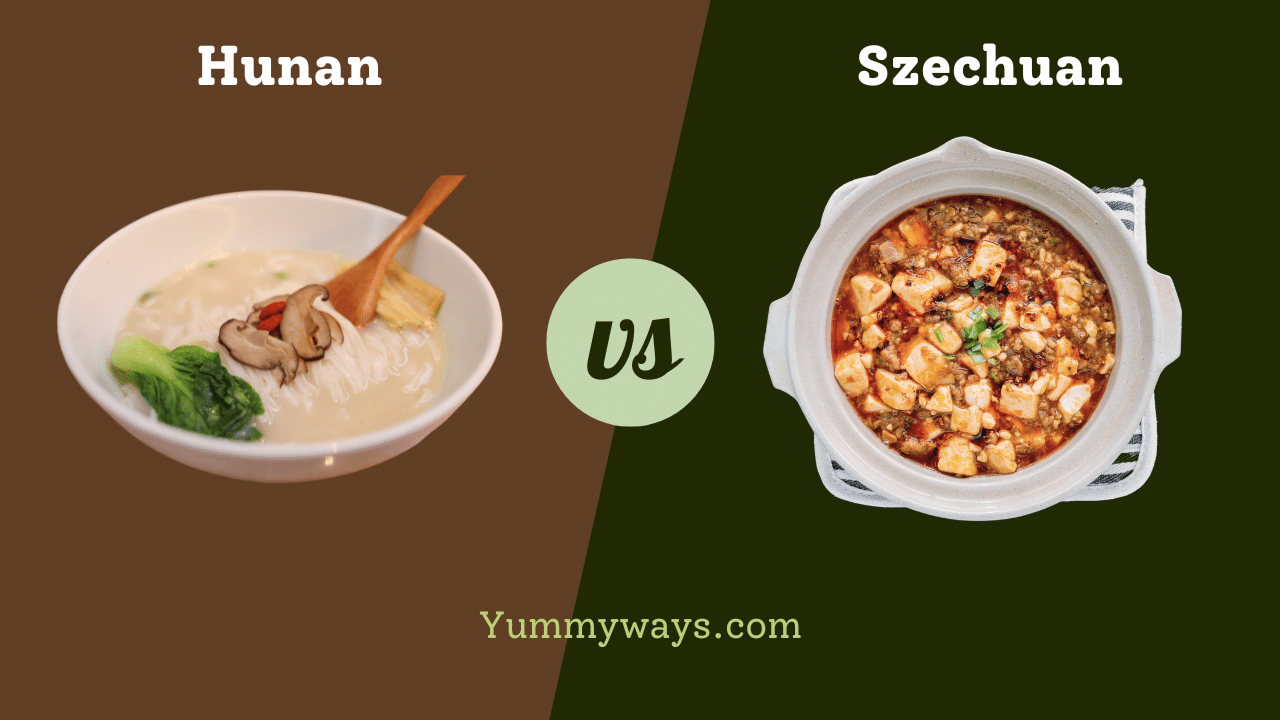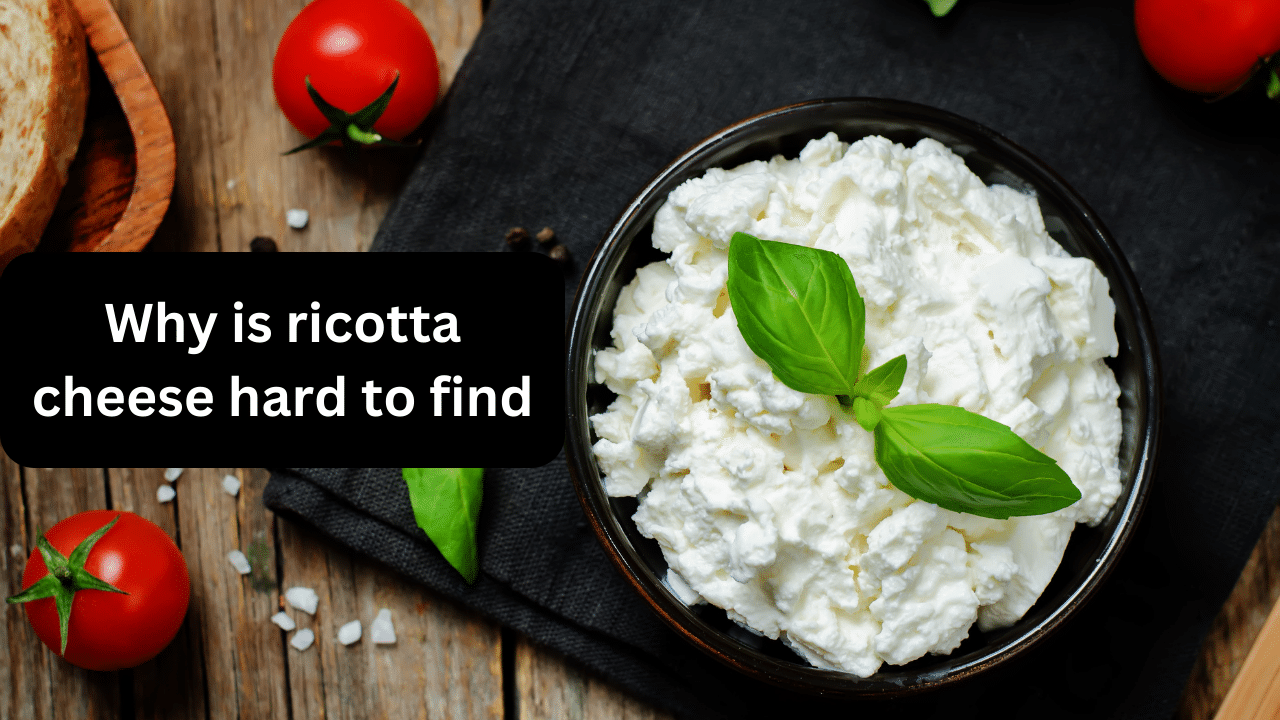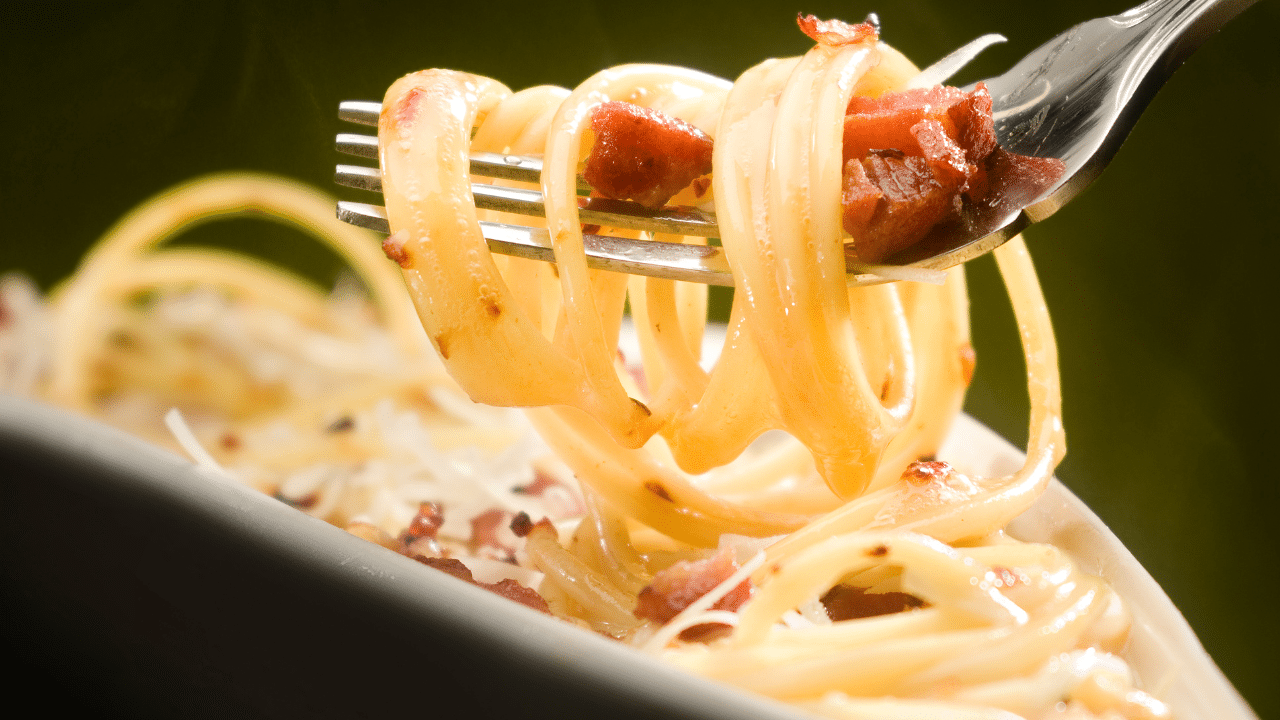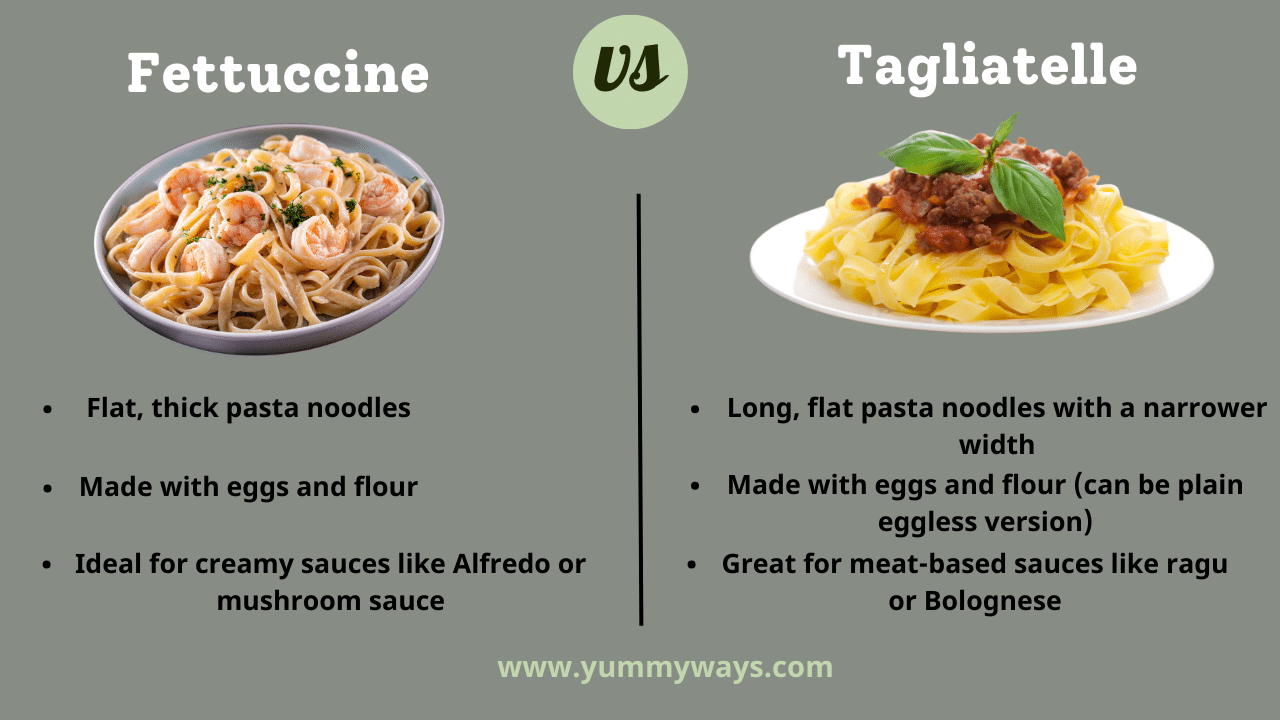Hunan and Szechuan are two regional Chinese cuisines known for their bold flavours. Hunan cuisine is spicier while numbing Sichuan peppercorns characterize Szechuan cuisine. Both offer unique taste experiences for food enthusiasts. Hunan dishes are spicier and use various ingredients, including chilli peppers, garlic, and ginger. On the other hand, Szechuan cuisine is famous for its mala flavour, which combines chilli peppers with Sichuan peppercorns to create a numbing and spicy sensation. While both cuisines have their own distinct characteristics, they share similarities, such as the use of stir-frying and braising techniques. Ultimately, the choice between Hunan and Szechuan comes down to personal preference and tolerance for spice.
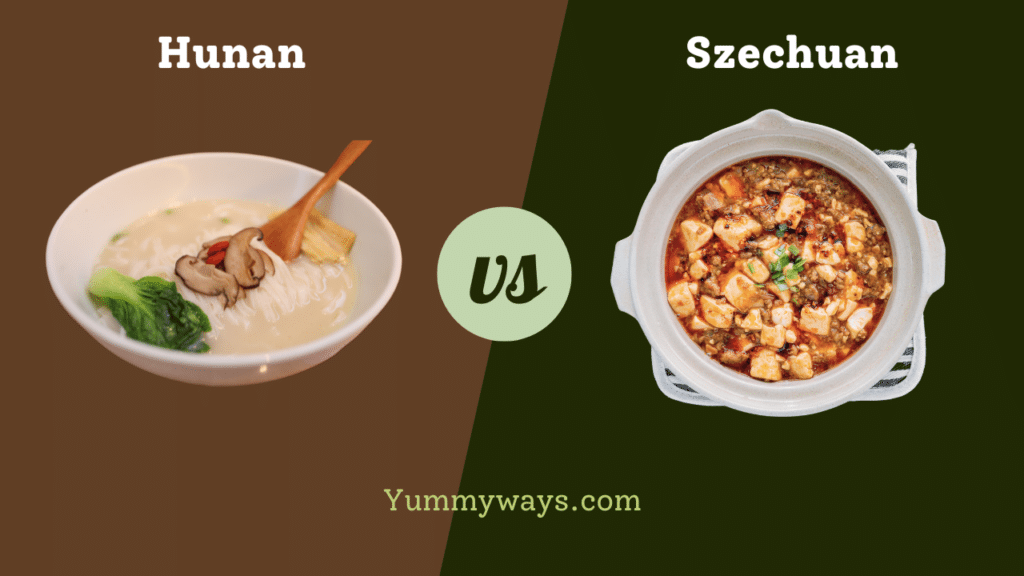
Also Read: Hand Roll vs Roll: A Comprehensive Comparison
Overview Of Hunan vs Szechuan
| Aspect | Hunan Cuisine | Szechuan Cuisine |
|---|---|---|
| Location | Southwestern China, centred around Sichuan | Flavour Profile |
| Bold, spicy, numbing, savoury | Bold, spicy, numbing, sour | Very spicy, numbing, milder options are available |
| Spice Level | Very spicy, intense heat | Chilli peppers, garlic, shallots, ginger, fermented black beans |
| Key Ingredients | Sichuan peppercorns, chilli peppers, garlic, ginger, fermented soybeans | Essential, responsible for the numbing sensation |
| Sichuan Peppercorns | Not a prominent ingredient | Fresh chilli peppers, dried chili peppers |
| Heat Source | Deeply flavorful, the balance of spiciness and other flavors | Chilli bean paste, chilli oil |
| Fresh chilli peppers, dried chilli peppers | Flavour Focus | Complex layers of spice, bold umami |
| Famous Dishes | Orange Chicken, Mao’s Braised Pork | Kung Pao Chicken, Mapo Tofu |
| Stir-fried Broccoli with Chili | Sichuan Hot Pot, Twice-cooked Pork | |
| Steamed Fish Head with Chilies | Southern China, centred around Hunan |
Hunan vs Szechuan: Exploring the Differences
Regarding Chinese cuisine, two regional styles often come up in conversation: Hunan and Szechuan. Both cuisines offer a range of flavours and dishes that will tantalize your taste buds. However, some distinct differences between the two make them unique in their own right. This article will explore the contrasting characteristics of Hunan and Szechuan cuisine, exploring their flavours, ingredients, and cooking techniques.
Flavour Profiles
Hunan cuisine is known for its bold and spicy flavours. The dishes are hot, sour, and salty, slightly sweet. Chilli peppers, garlic, and ginger are prevalent in Hunan dishes, creating a fiery and intense taste. On the other hand, Szechuan cuisine is famous for its numbing and spicy flavours. The cuisine incorporates the use of Szechuan peppercorns, which give a unique tingling sensation to the palate.
Also Read: Boba vs Tapioca: Decoding the Differences and Making a Choice
The Role of Chili Peppers
While both cuisines feature chilli peppers, they are used in different ways. Chilli peppers are primarily used for their spiciness and heat in Hunan cuisine. They are often dried and then stir-fried or used as a seasoning. In contrast, Szechuan cuisine takes chilli peppers to another level. Along with their spiciness, Szechuan cuisine utilizes a variety of chilli peppers to create different layers of flavour, such as smoky, fruity, or floral.
Heat Level
When it comes to the level of heat, Szechuan cuisine is considered to be hotter than Hunan cuisine. Including Szechuan peppercorns adds an extra dimension of heat and numbing sensation to the dishes. However, it does not necessarily mean that Hunan cuisine is mild. It still packs a punch using chilli peppers and other spicy ingredients.
Ingredients
Hunan cuisine emphasizes the use of fresh ingredients and aromatic spices. It often incorporates smoked meats, pickled chillies, and fermented vegetables. On the other hand, Szechuan cuisine utilizes a wide range of ingredients, including peanuts, sesame paste, garlic, ginger, and soy sauce. It is also known for using vegetables like green onions, bamboo shoots, and bean sprouts.
Cooking Techniques
Hunan and Szechuan cuisine employ various cooking techniques to achieve their distinctive flavours. Hunan dishes often involve techniques such as stir-frying, braising, and smoking. On the other hand, Szechuan cuisine is known for its unique method of dry-frying, which involves stir-frying ingredients without much oil.
Popular Dishes
Some popular Hunan dishes include General Tso’s Chicken, Hunan Beef, and Orange Chicken. These dishes are characterized by their spicy and tangy flavours. On the other hand, Szechuan cuisine is famous for dishes like Kung Pao Chicken, Mapo Tofu, and Szechuan Hot Pot. These dishes showcase the numbing spiciness and multifaceted flavours of Szechuan cuisine.
Also Read: Cooked Salmon vs Raw Salmon: Which is Healthier?
Conclusion
While Hunan and Szechuan cuisines are renowned for their fiery flavours, they differ in specific ingredients, cooking techniques, and flavour profiles. Whether you prefer the intense heat and bold flavours of Hunan cuisine or the numbing spice and diverse flavours of Szechuan cuisine, both styles offer a culinary experience that will surely excite your taste buds. So, the next time you’re craving Chinese food, consider exploring the unique flavours of Hunan and Szechuan and discover which one suits your palate best.
Frequently Asked Questions
1. What is the difference between Hunan and Szechuan cuisine?
Hunan cuisine is known for its bold and spicy flavours, while Szechuan cuisine is famous for its numbing and spicy flavours. Hunan cuisine focuses more on deep-frying and stir-frying, while Szechuan cuisine includes techniques like braising and stewing.
2. Which cuisine is spicier: Hunan or Szechuan?
Szechuan cuisine is spicier than Hunan cuisine. Szechuan cuisine relies heavily on dried chilli peppers and Sichuan peppercorns, which create a numbing and spicy sensation. Hunan cuisine also incorporates spicy flavours but tends to be slightly milder in comparison.
3. What are some popular dishes in Hunan cuisine?
Popular dishes in Hunan cuisine include Spicy Crispy Beef (La Zi Ji), Orange Chicken, Steamed Fish with Chili and Fermented Black Beans (Dou Ban Yu), and Mao’s Braised Pork (Mao Shi Hong Shao Rou).
4. What are some popular dishes in Szechuan cuisine?
Popular dishes in Szechuan cuisine include Kung Pao Chicken, Mapo Tofu, Twice-Cooked Pork (Hui Guo Rou), and Fish Fragrant Eggplant (Yu Xiang Qie Zi).
5. Are there any non-spicy dishes in Hunan and Szechuan cuisine?
Yes, both Hunan and Szechuan cuisines offer non-spicy dishes. Some examples include Steamed Fish with Ginger and Scallions, Stir-Fried Green Beans, and Sweet and Sour Pork.
6. Can I request the level of spiciness when ordering from a Hunan or Szechuan restaurant?
Yes, most Hunan and Szechuan restaurants allow you to customize the level of spiciness in your dishes. Depending on your preference, you can ask for mild, medium, or extra spicy.
7. Are there vegetarian options available in Hunan and Szechuan cuisine?
Yes, both cuisines offer vegetarian options. Some popular vegetarian dishes include Ma Po Tofu (using vegetable broth), Sichuan Dry-Fried Green Beans, and Steamed Vegetables with Garlic Sauce.
8. Is MSG used in Hunan and Szechuan cuisine?
MSG (monosodium glutamate) is used in Chinese cuisine, including Hunan and Szechuan dishes. However, many restaurants offer MSG-free options upon request or use it sparingly.
9. Can I find Hunan and Szechuan cuisine outside of China?
You can find Hunan and Szechuan cuisine in various parts of the world, especially in Chinese restaurants. Major cities often have dedicated restaurants specializing in these cuisines.
10. Are Hunan and Szechuan cuisine only about spiciness?
No, Hunan and Szechuan cuisines are not solely about spiciness. They also emphasize the balance of flavours, including savoury, sweet, sour, and umami. These cuisines offer a wide range of dishes with diverse taste profiles.
